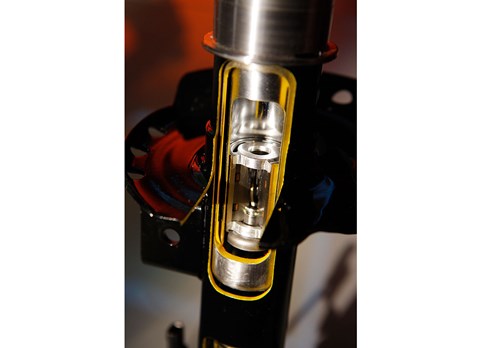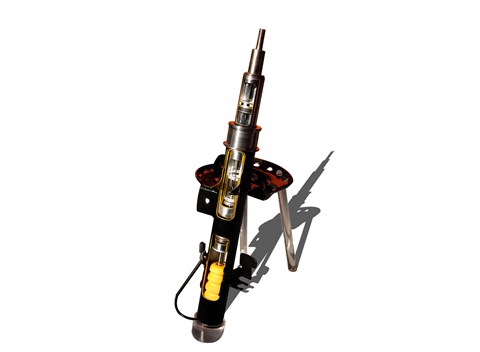► Potholes cost us £2.8bn a year
► Ranger Rover tech detects holes
► Could also warn other drivers
Punctures, broken suspension, buckled wheels… potholes are bad news for UK motorists, but now Jaguar Land Rover claims to have calculated the true annual cost: a staggering £2.8bn. Don’t panic, it says, it’s working on the solution: a new connected-car technology dubbed Pothole Alert (PA).
It’s timely news: in the budget chancellor George Osborne said that the quality of Britain’s roads lags behind Puerto Rico and Namibia, despite four-fifths of all our journeys being by road, and he pledged to plough 100% of Vehicle Excise Duty into roads by 2020-21. Here, too, JLR plans to help: data from PA can be fed to local authorities, helping to target funding needs.
Pothole Alert tech: how does it work?
CAR drove an Evoque equipped with prototype Pothole Alert. Like many connected-car technologies, the hardware exists already in today’s vehicles; it’s simply a matter of joining the dots. In this case, the foundations for PA lie with the Evoque’s optional MagneRide suspension. This uses electro-magnetic forces acting on iron filings to alter the viscosity of damper fluid, either hardening or softening the suspension to suit road conditions. PA takes data from the MagneRide sensors as the dampers compress and rebound, and combines it with information from the roll-control and traction-control systems to measure the length, depth or height and severity of road blights. The sat-nav’s GPS simultaneously determines the car’s position, and the car uploads the data to the cloud to share among other road users.
Quite how this information is relayed to other drivers, and in which cases, is yet to be determined. Head-up display systems have obvious potential, but the exact nature of the message has not been finalised, and engineers are mindful that constantly alerting drivers to a road in bad repair would become tiresome and distracting. These are the fine – and crucial – details that must be finessed before Pothole Alert reaches production.

How about just filling in the potholes?
Of course, eliminating potholes altogether, particularly if you’re driving a non-connected car or riding a bike, is a better solution. That’s why JLR is about to undertake a joint research programme with Coventry County Council. ‘We’ll be investigating how Pothole Alert could supply us with data in real-time from thousands of connected cars across our road network,’ says cabinet member for public services Rachel Lancaster. ‘We already collect lots of data which we monitor very carefully, but having this extra information might allow us to further improve our maintenance programmes, saving the taxpayer money.’
Pothole Alert is in its infancy, and JLR is keen to emphasise the future potential. A logical next step is for vehicles receiving pothole data to proactively soften their suspension, ensuring a smoother ride for occupants. A forward-facing stereo camera – recently introduced to support autonomous emergency braking – could scan the road ahead and pre-emptively soften suspension too, much as Mercedes’ Magic Ride Control does today. It could also send a picture of the damaged road to the local council.
PA also supports the inexorable rise of autonomous driving. ‘We’re looking to develop systems that could automatically guide an autonomous car around potholes without the car leaving its lane and causing a danger to other drivers,’ reveals Mike Bell, JLR’s connected-car director. ‘If the pothole hazard was significant enough, safety systems could slow or even stop the car. This could all help make future autonomous driving a safe and enjoyable reality.’
Last year, compensation claims in England (excluding London) totalled £20.2 m, according to the Annual Local Authority Road Maintenance Survey, more than double the previous year. So not only do potholes hit motorists in the pocket, the claims suck cash from government coffers. Perhaps by 2020, then, better-funded roads and smarter cars will make that a thing of the past.
The breakdown: how it works in detail

1) The Evoque’s continuously variable MagneRide dampers impact on a pothole, manhole cover or damaged drain
2) Existing sensors in the magnetorheological dampers, roll-control and traction-control systems combine to measure the severity of the impact, while GPS from the sat-nav is used to determine its location
3) This information is digitally uploaded to the cloud via the Evoque’s internet connection, then automatically shared with other road users and the local authority
4) Road users are alerted to particularly severe potholes, while the local authority can more accurately target essential repairs